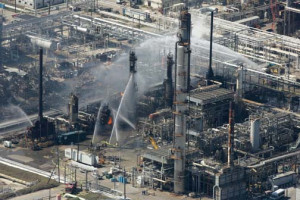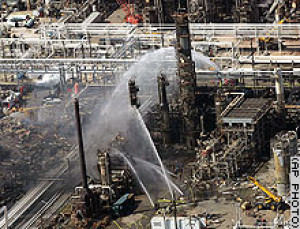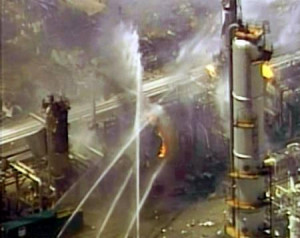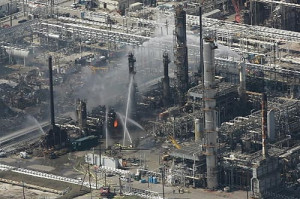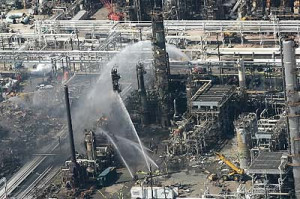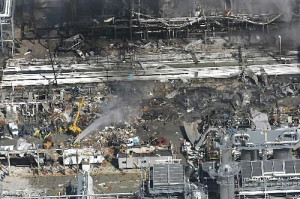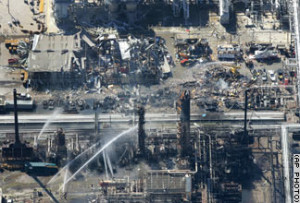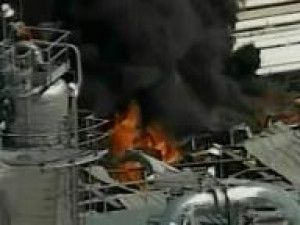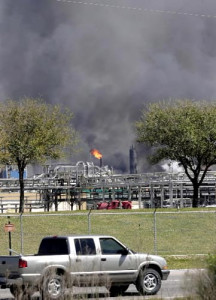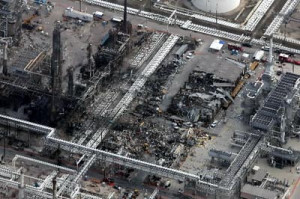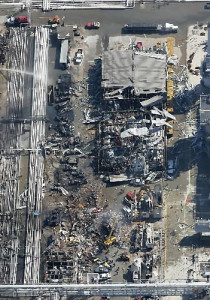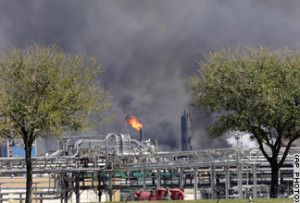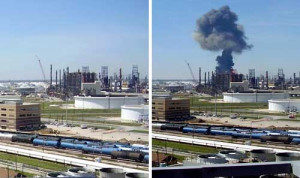At 1.20 pm, a violent explosion rocked a gasoline isomerisation unit in a refinery. Having been shut down for maintenance one month earlier, the separator was being restarted at 2 am. The operators began filling the raffinate splitter with highly flammable hydrocarbons. During normal operation, the liquid level at the base of the tower is roughly 2 m. The level indicator, with remote reporting in the control room, is designed to measure a maximum level of 3 m. Beyond this, the control room operator has no way of knowing the actual height of the product. The first alarm signalled a high-level threshold, while a second fail-safe alarm was not triggered. The loading operation was stopped at 3.30 am, when the actual level was at 4 m. At around 9.50 am, the operators began circulating the liquid by adding liquid in the already full tower. The furnace burners were ignited at 10 am while the height in the tower was 20 times greater than the normal level (42 m) and the indicator in the control room was displaying a level of 3 m. At 12.40 pm, a high-pressure alarm was triggered and 2 burners were shut down. As the pressure control valve used in the procedure was not operative, an operator opened a manual valve to release the gas into a purge tank. At around 1 pm, the operators opened a valve at the base of the tower and drained the liquids into the storage tanks. These very hot liquids, however, passed via an exchanger heating the load that was supplying the tower, the temperature of which exceeded 150 °C; the liquid contained was at its boiling temperature, and its expansion increased the level in the tower even more and spilled over into the vertical pipes, exerting a large amount of pressure on the 3 valves located 50 m below. The valves opened at 1.14 pm; the liquid flowed toward the purge tank at the other end of the unit. As the high level alarm was faulty, it was filled up and 28 m3 of liquid was ejected via the pipe for 2 minutes. A flammable cloud formed and was ignited at 1.20 pm by an idling truck engine located 8 m from the purge tank, igniting several explosions and fires. The blast was felt 8 km away. The flames reached shot up 20 m high and the smoke was visible several kilometres away. The operators installed detectors and the population remained confined indoors for 2 hours. Firefighters were able to bring the fire under control in 2 hours. The blast killed fifteen contractors attending a meeting in trailers located 140 m away and injured 180 others. Property damage was extensive in the unit and storage area where nearby buildings and more than 50 tanks were damaged. The inquiry brought to light the presence of outdated equipment, the malfunction of safety equipment, the lack of or insufficient procedures, errors committed by poorly trained and weary operators on a site where the overall level of safety was tarnished by insufficient investments.



